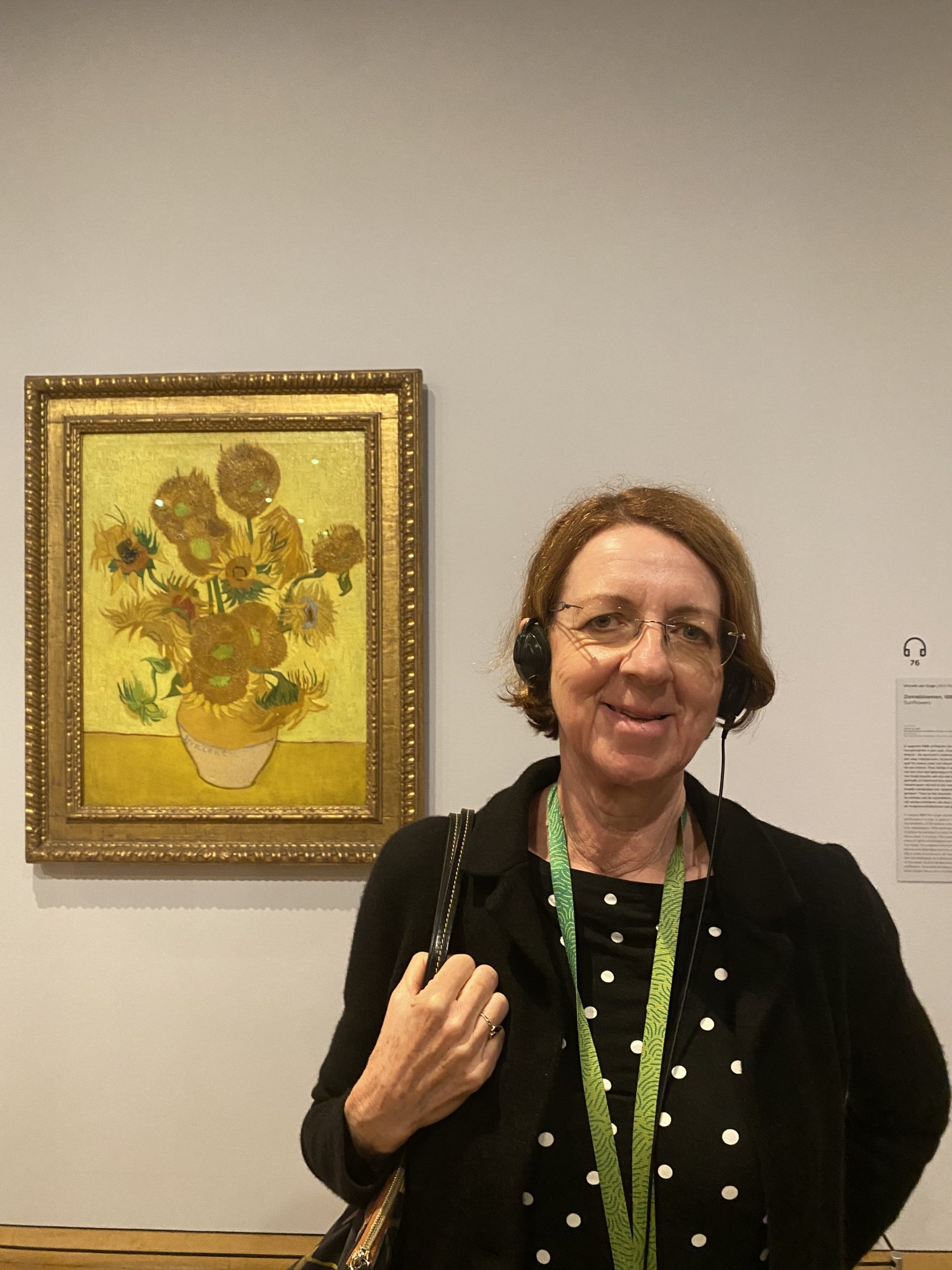I booked a trip to Amsterdam on the strength of a newspaper review of the current Vermeer exhibition at the Rijksmuseum. The Times called it ‘the exhibition of the century’ and ‘a once in a lifetime experience’, so of course, I had to go. And one of the advantages (or perils) of reading a newspaper online is that tickets/holidays/restaurant bookings are just one impulsive click away. Then of course there’s the Eurostar, which goes straight to Amsterdam from St Pancras, meaning that a trip to the Netherlands is no more of a big deal than a weekend jaunt to Brighton.
There are twenty-seven of Vermeer’s thirty-five authenticated paintings in the exhibition and they are wonderful, and beautifully curated. I learnt a lot as I progressed from room to room. I started to notice the way the light fell on the subjects, and the influences from outside – open windows, open doors, maps of the world – as if the women were trying to escape. His depiction of fabrics is exquisite. As one woman standing near me said to her friend, ‘You could run your hand over that fringing, it looks so real.’
It was also interesting to see the same items of clothing and props appearing in several paintings.
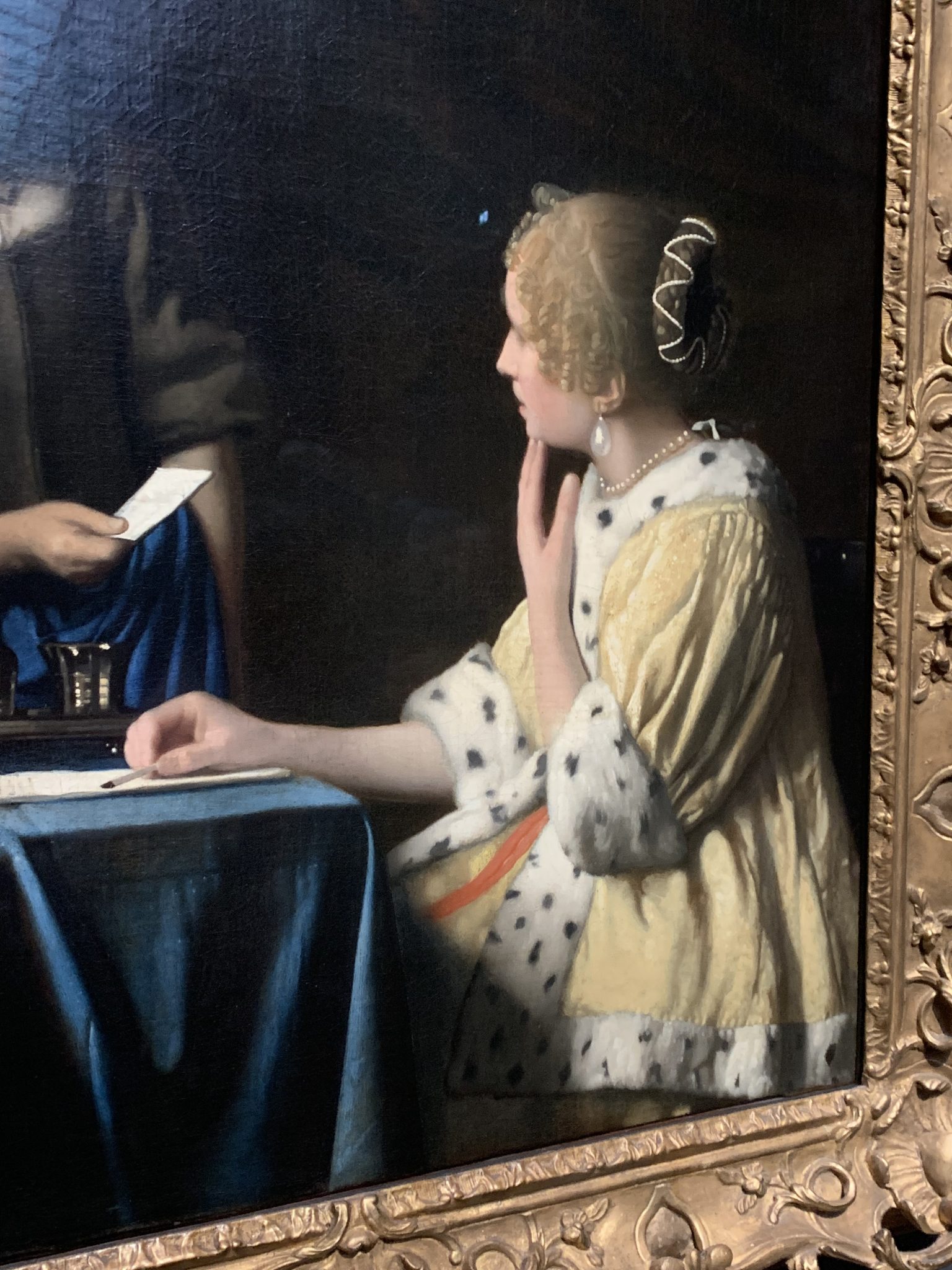
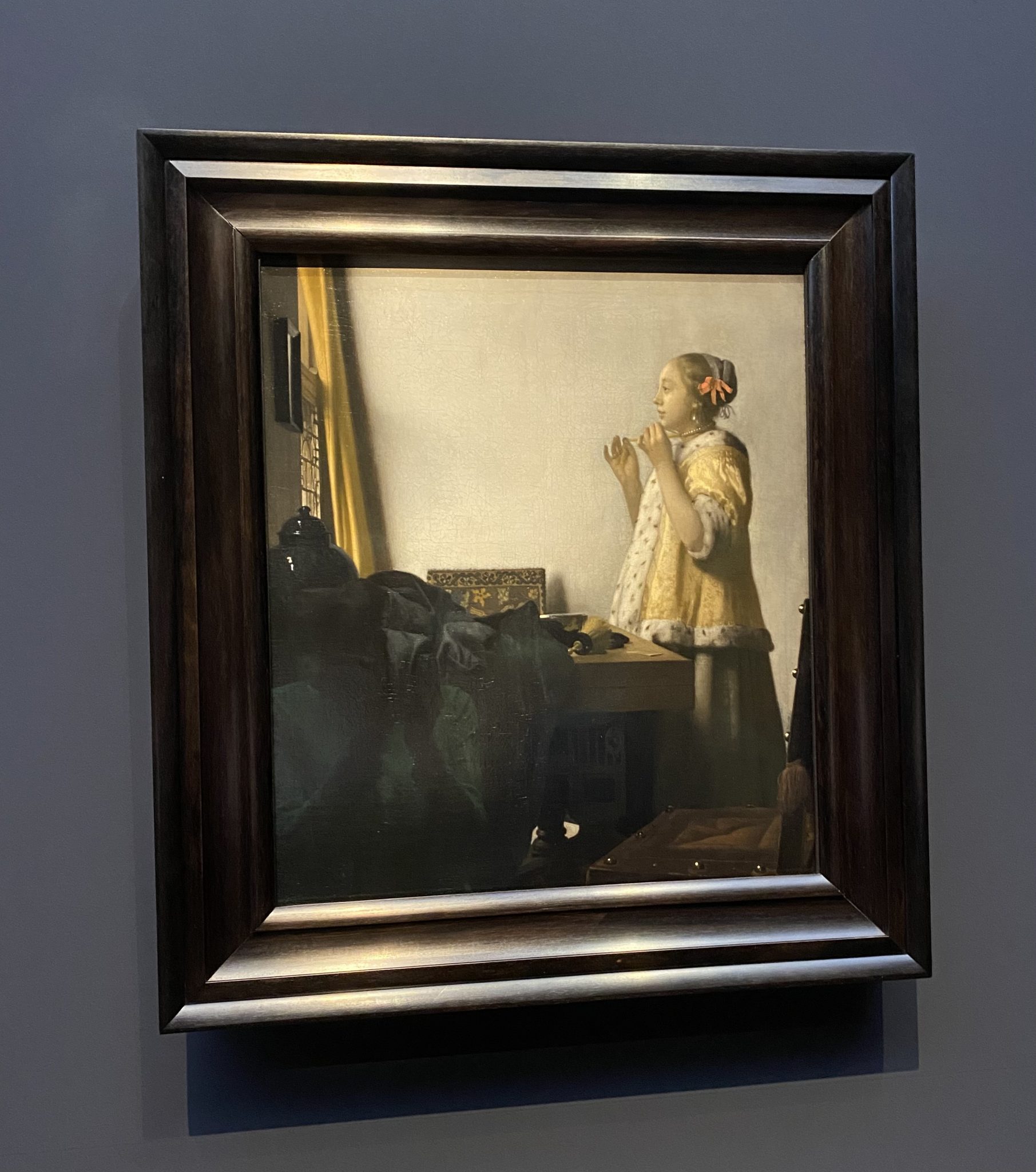
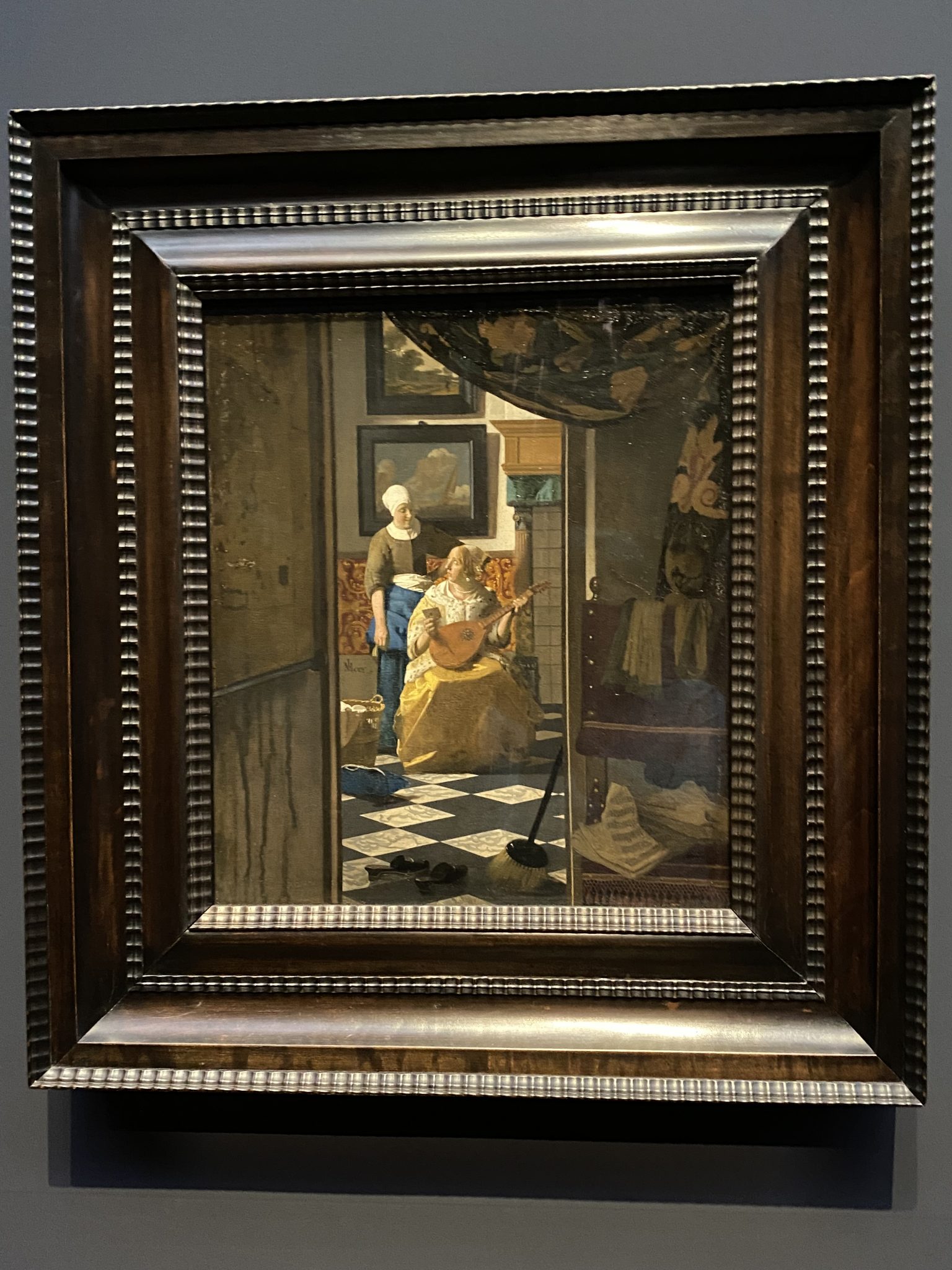
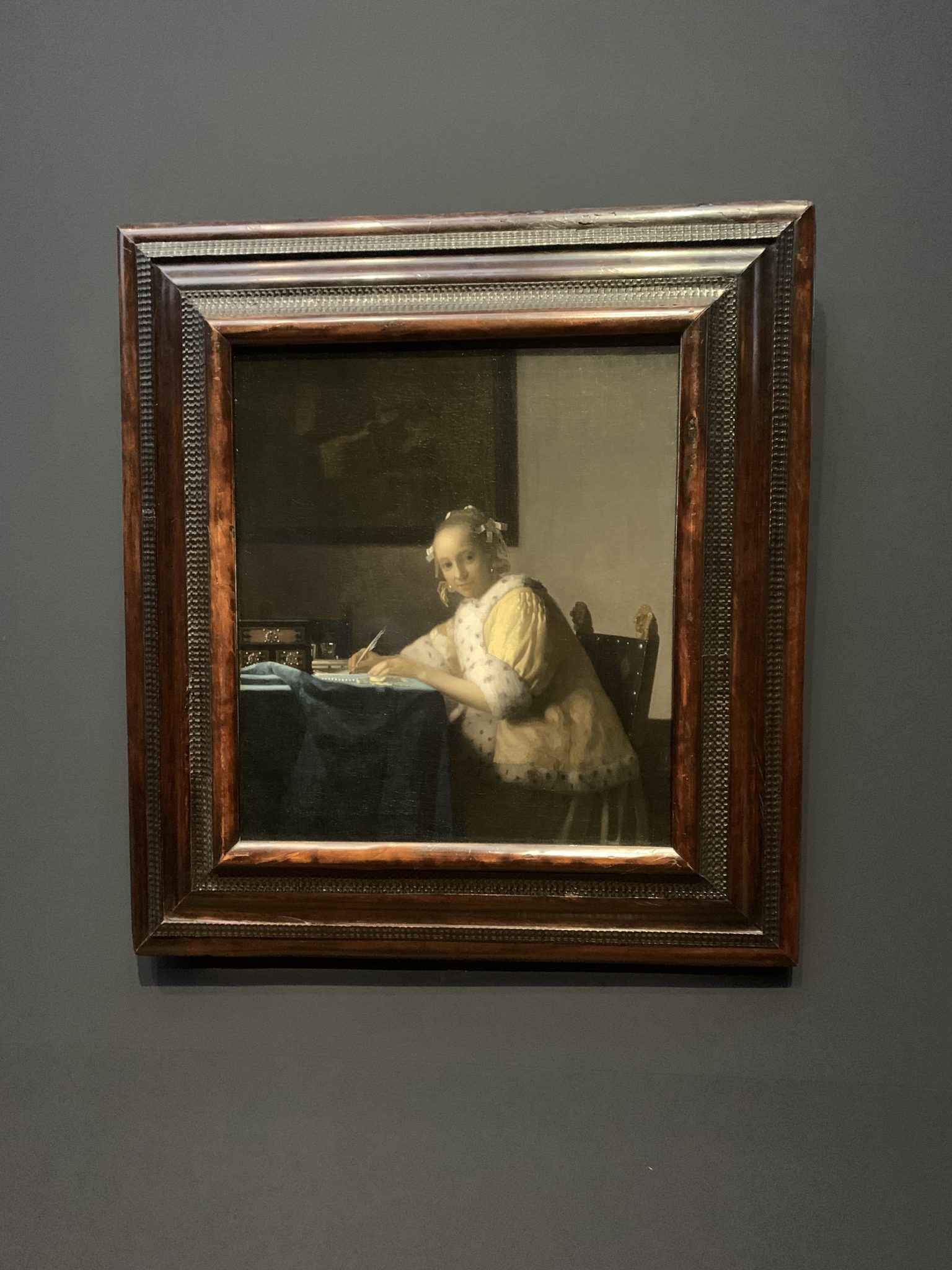
He was either ahead of his time and keen to reuse and recycle – or else very hard up. And with fourteen children, I’m guessing it was the latter.
The exhibition was packed, and with only twenty-seven pictures on display, there was a sizeable crowd around each one. I discovered that there’s a definite skill to worming your way to the front of a crowd – sharp elbows and a very supple torso are essential. But once you’d made it to the front and spent your allotted two minutes admiring the painting, it was practically impossible to move back, because nobody was willing to cede even an inch of the ground they’d gained to let you retreat. So it was elbows out again and more Marcel Marceau contortions to fight your way to the back of the crowd and then move to the next painting and start all over again. All in all, it was a rewarding but exhausting experience.
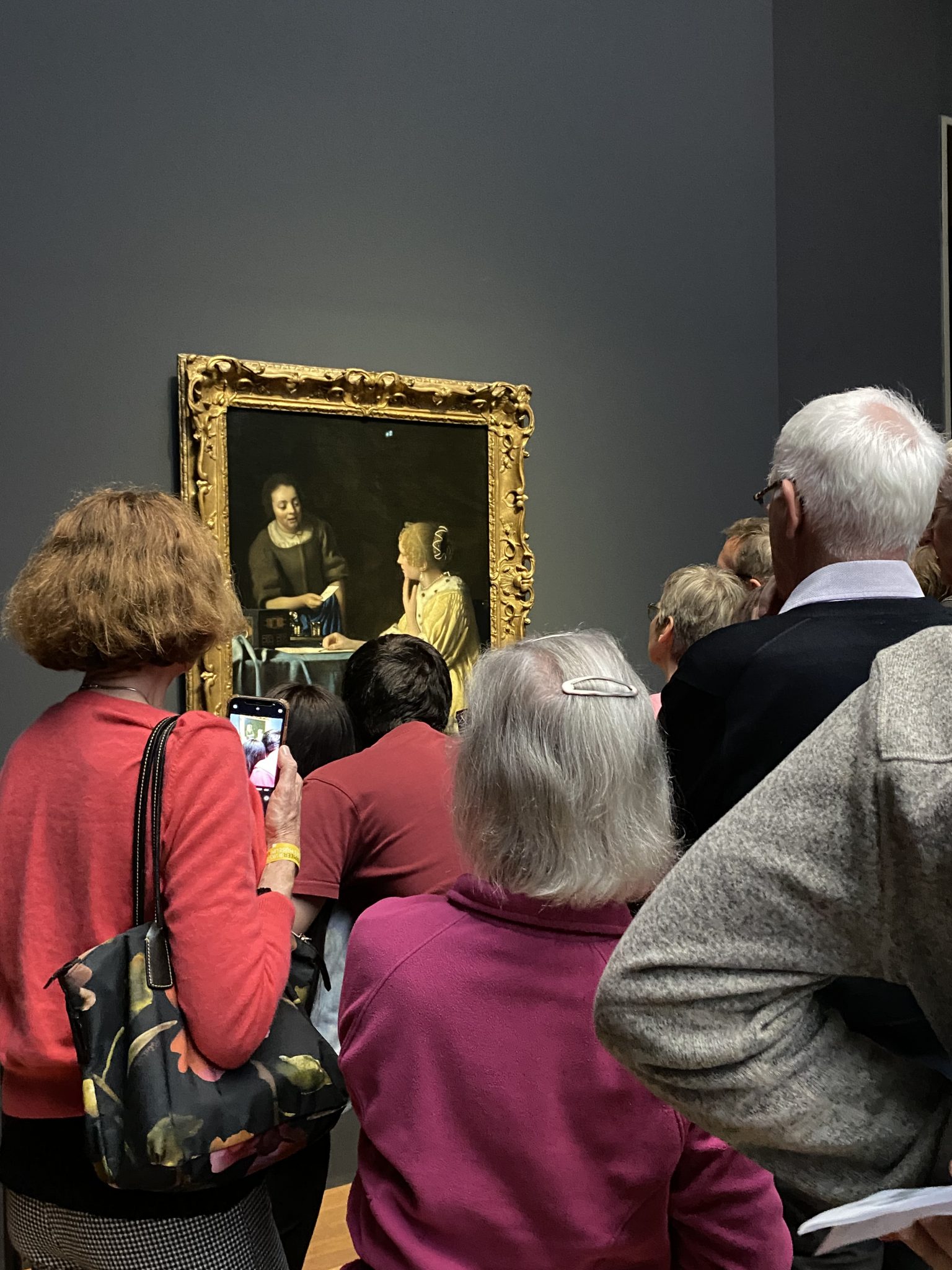
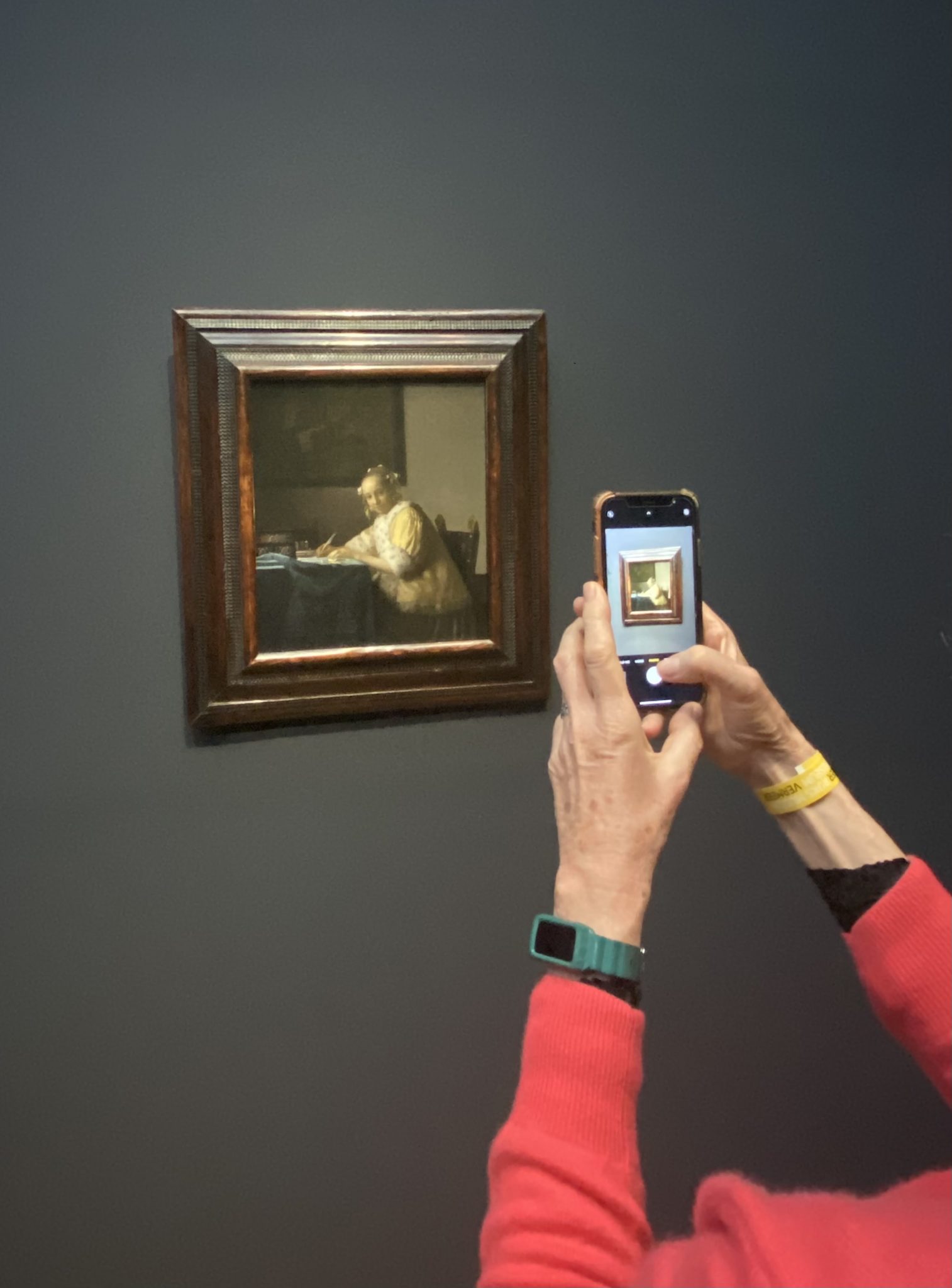
It seems unfair that a small country like the Netherlands should have not one, but two global superstar artists. But they do, so we hopped across to the Van Gogh Museum the next day, where we learnt that he spent the last seventy days of his life in Auvers-sur-Oise, and he produced a total of seventy-six paintings during that time. I found myself thinking that if only Vermeer had been this productive, there would have been much less of a scrum at the Rijksmuseum.
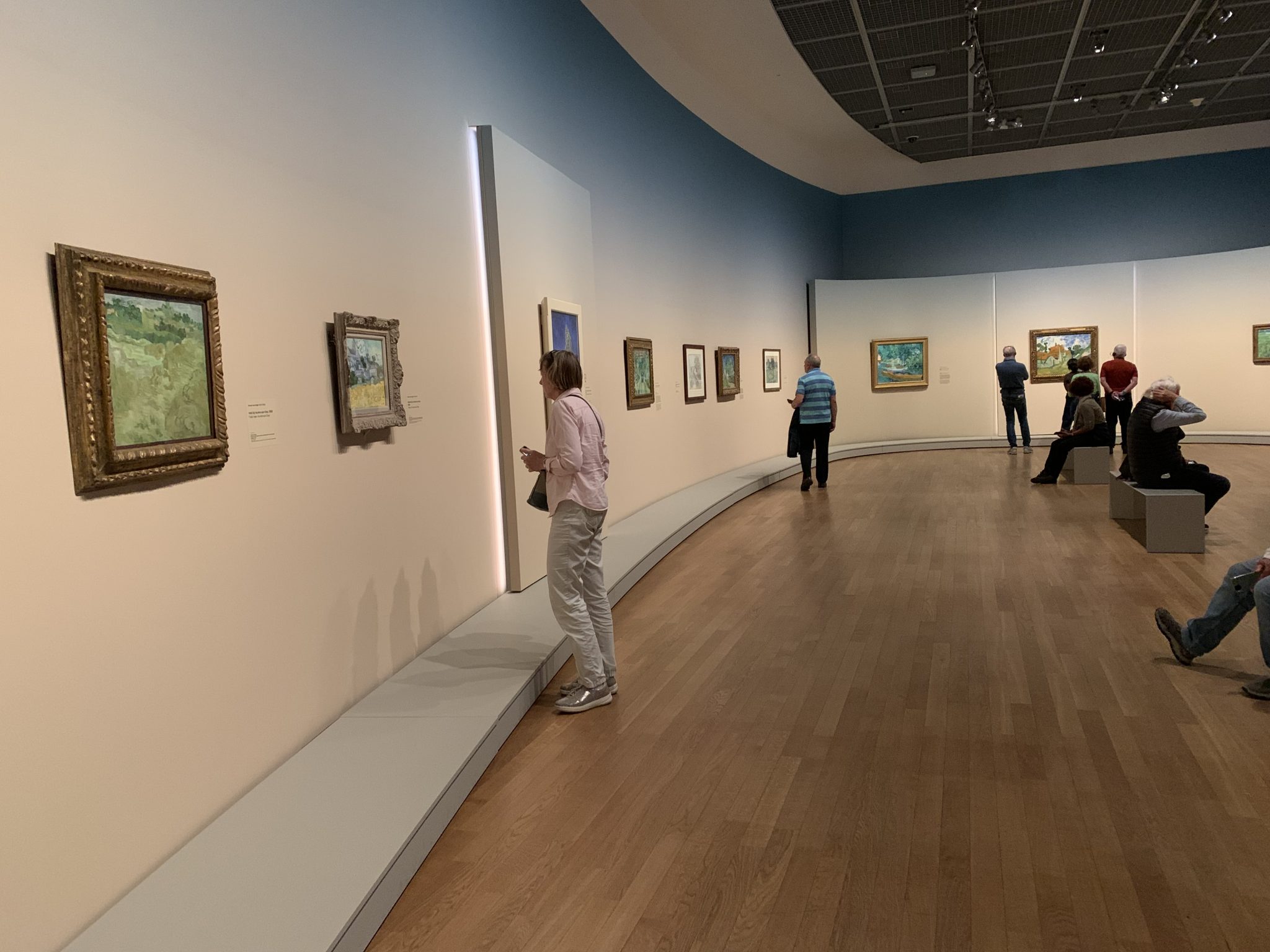
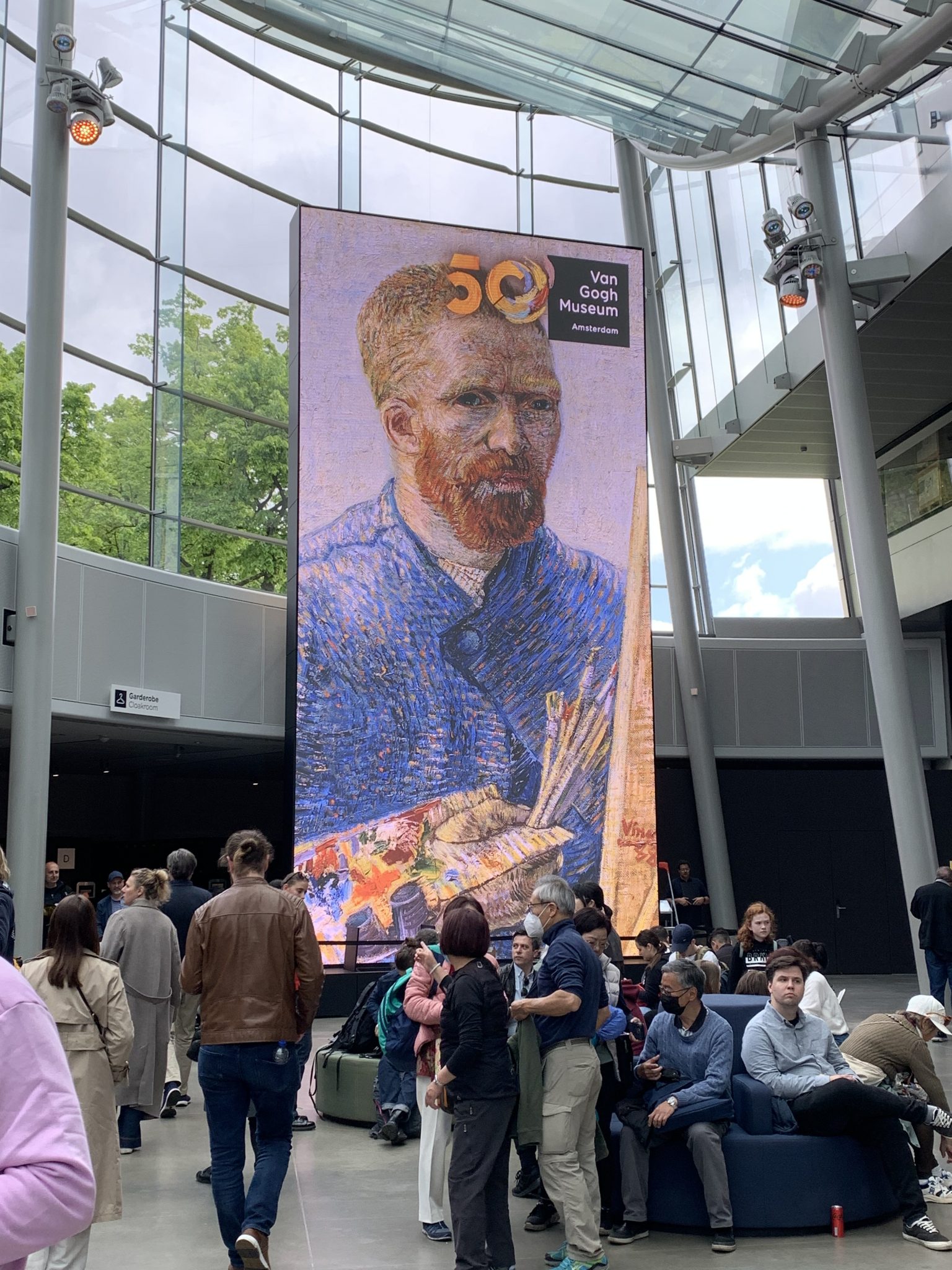
I’ve visited Auvers many times on school trips to France, always taking the students on a guided tour of the locations that inspired his paintings. So it was lovely to see the original paintings of the church and the cottages, rather than the faded photocopies the guides show you when they take you on the Van Gogh walk.
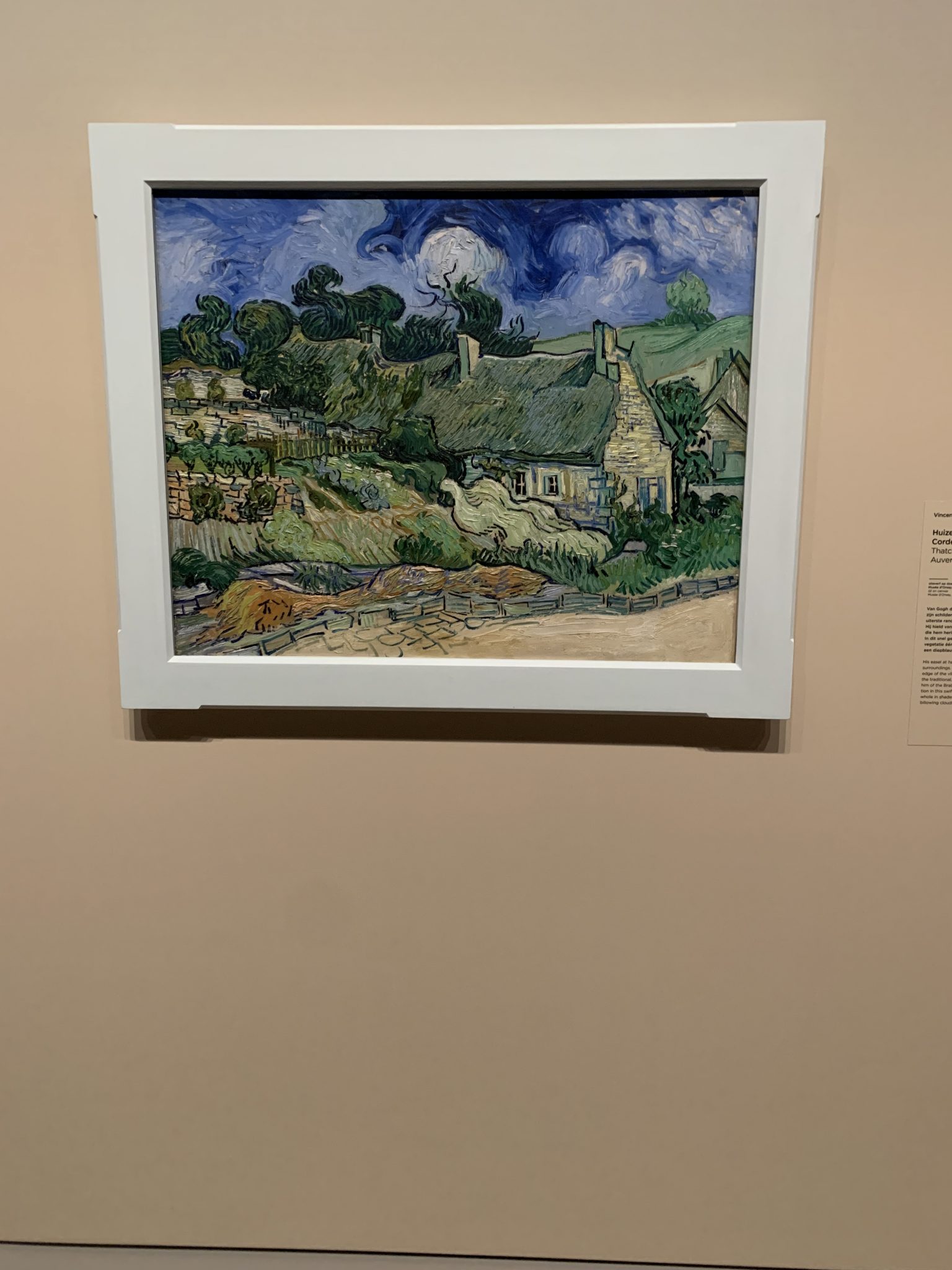
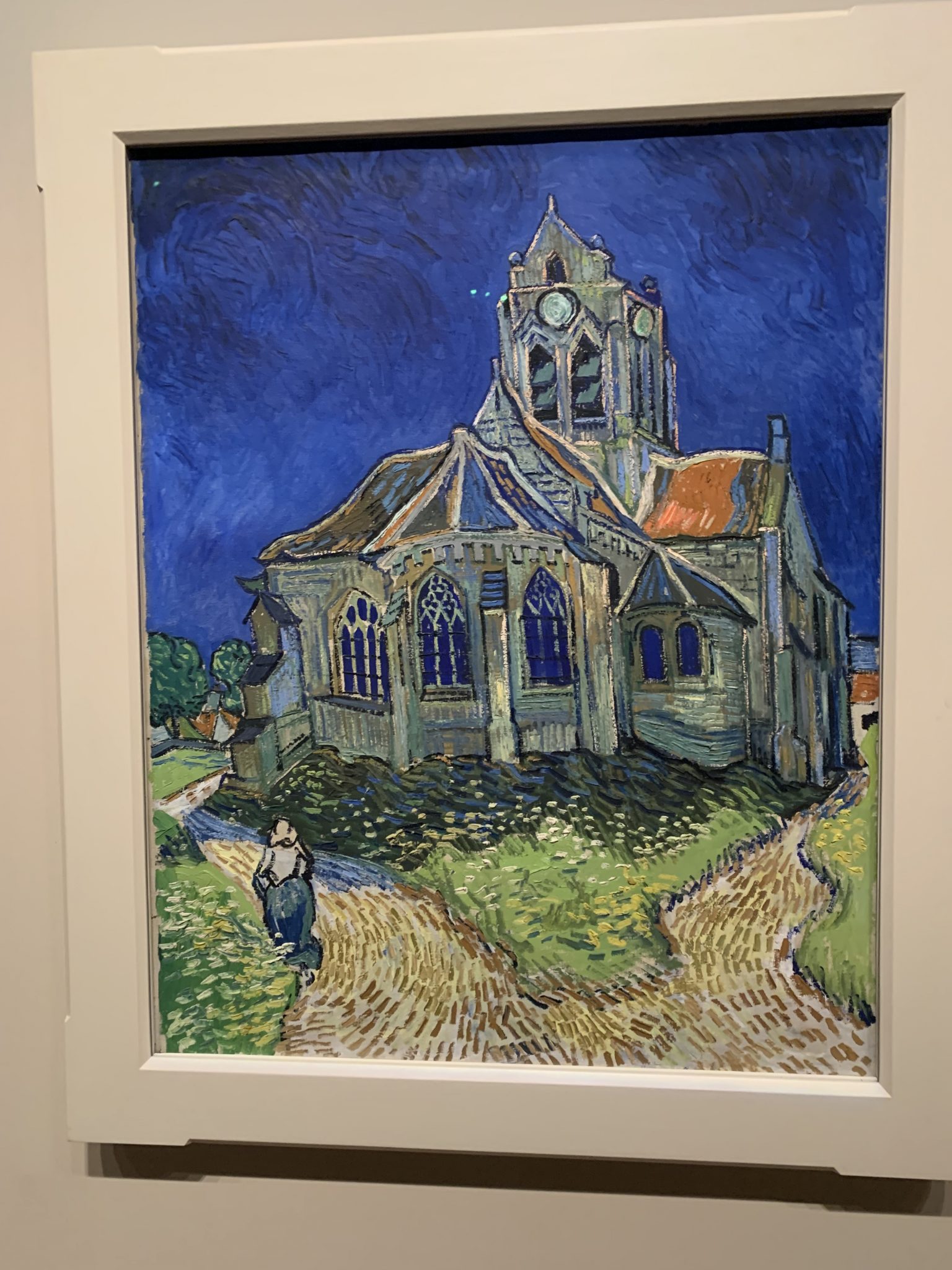
Having visited the Van Gogh Museum, I now have another entry on my bucket list. I want to see almond blossom in real life; it’s so beautiful in his paintings, and I don’t think I’ve ever seen an almond tree in real life … and certainly not one in flower.
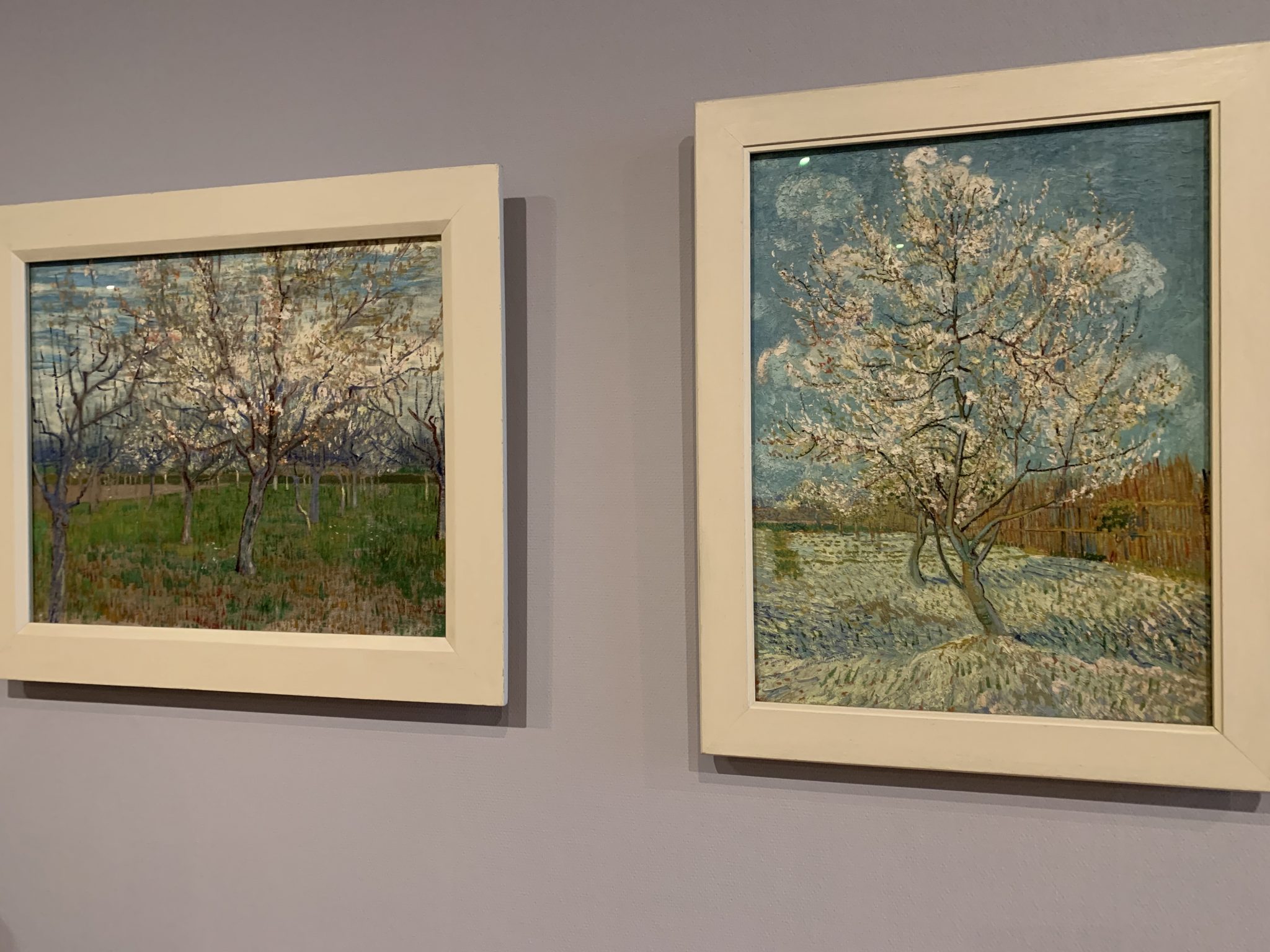
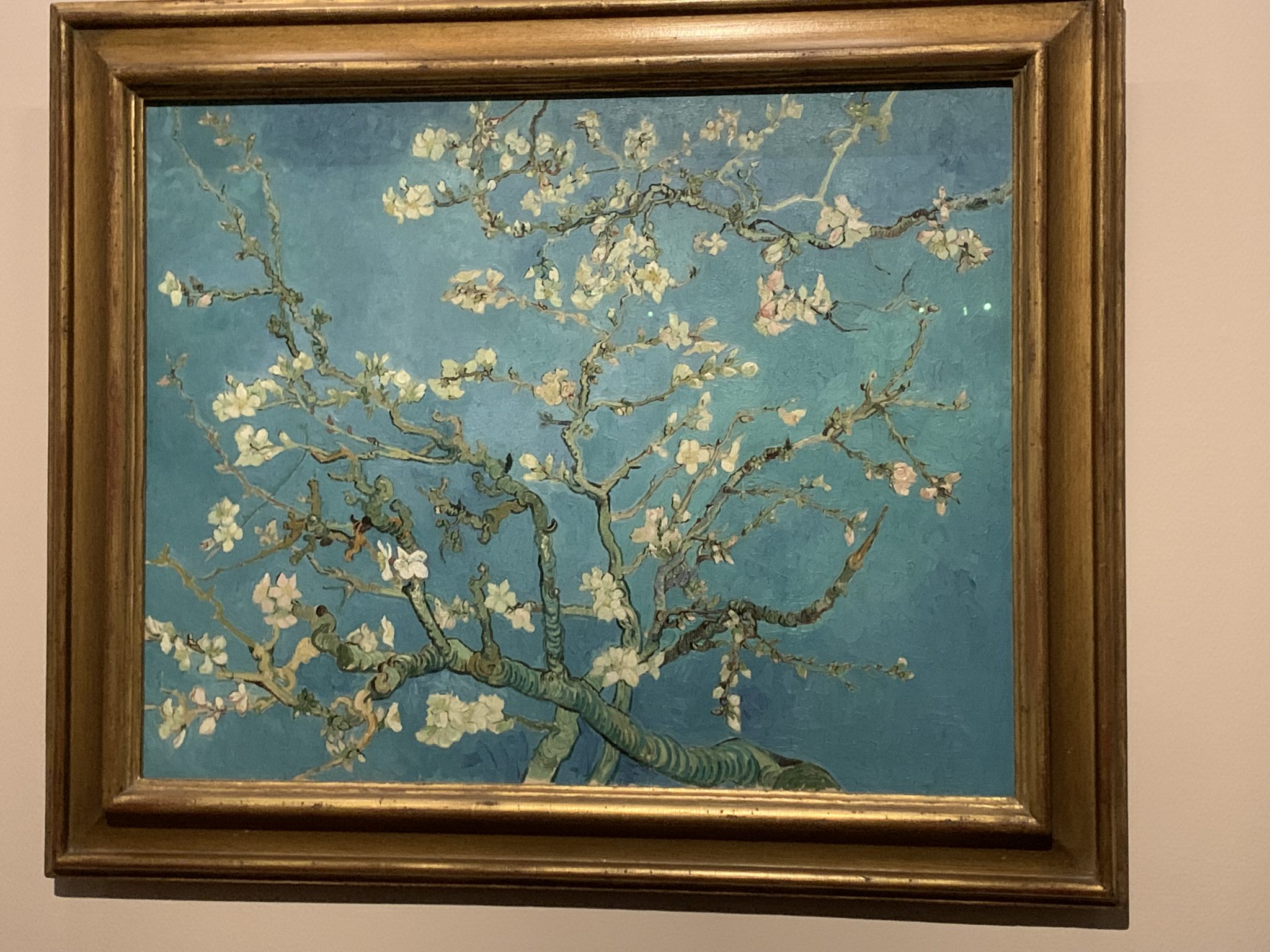
Of course we saw the sex shops and the drug shops as we walked around admiring the canals and the architecture. But they seemed peripheral to Amsterdam’s success as a city – a seedy hinterland which shouldn’t be allowed to define this beautiful, cultural city.
